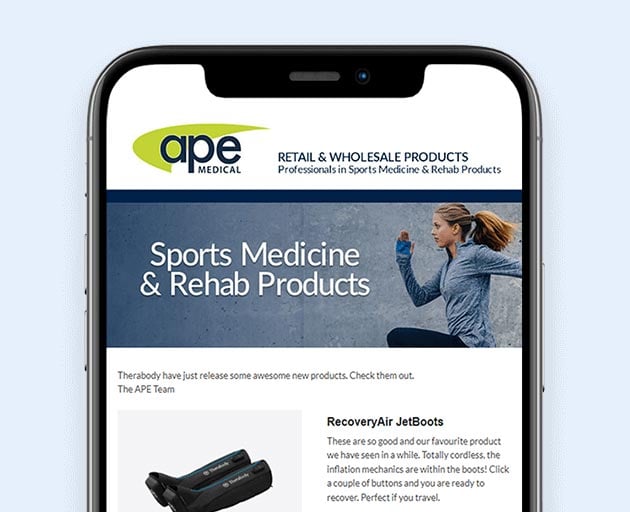Blisters can be debilitating for sports people and can significantly reduce performance.
Blisters are caused by two main factors- friction and moisture. Friction and shearing forces in a moist environment (forces directed across the skin) causes the layers of skin to separate (epidermis from the dermis) and fill with either a clear fluid or blood (if a break in a small blood vessel occurs).
Blisters are most commonly found on the hands and the feet. Most commonly we will see blisters develop during the season with unaccustomed footwear or an activity overload.
Blisters start as “hot spots”. Initially, the skin area is tender to the touch and becomes red and irritated. If the friction continues, then the layers of skin separate filling the area with fluid. It is the pressure from the fluid that causes the pain because the pressure stimulates the nerves under the skin.
There are 5 blister stages;

Management
Hot Spots and Pressure Areas
 Often you can prevent a blister from developing by managing the hotspot or identified pressure areas ie heels, big toes, pressure areas caused by strapping techniques
Often you can prevent a blister from developing by managing the hotspot or identified pressure areas ie heels, big toes, pressure areas caused by strapping techniques
- Cover the hotspot area with a simple tape such as a rigid tape, kinisio tape or fixomull to prevent direct friction to the skin. Wound coverings like Cutiplast or Primapore also can be used to soften the pressure and reduce the friction to the area.
- Use products such as Spenco Second Skin over the pressure areas to reduce direct friction to the area. Place second skin on hot-spot, followed by fixomull cover, followed by a second Second Skin layer covered by a final layer of fixomull and covered over by rigid tape.
- Use products such as 2Toms to reduce friction and moisture in identified areas. ie sprinkle into shoes, wipe heels etc this reduces friction and moisture.
- Identified friction spots can be covered with light foam coverings or gel coverings to prevent from hot-spots an blisters from developing. Commonly these areas can be found around friction spots of taping techniques or around toes.
Closed Blisters
 It is important to note that the skin overlying the blister is protective and should remain in place as long as possible. A common mistake athletes make is to remove the overlying skin of the blister. This exposes the underlying skin to possible infection. Also, removing the skin causes increased pain because raw nerve endings are exposed.
It is important to note that the skin overlying the blister is protective and should remain in place as long as possible. A common mistake athletes make is to remove the overlying skin of the blister. This exposes the underlying skin to possible infection. Also, removing the skin causes increased pain because raw nerve endings are exposed.
The question most often asked is “Should I drain the blister?” The answer depends on whether the blister is filled with fluid or not. Because the pain from the blister is caused by pressure from the built-up fluid, draining a blister that is filled with fluid will immediately reduce the pain associated with a blister.
Draining a blister can be done safely at home as long as proper treatment protocols are followed. They include the following:
• Clean the area thoroughly with antiseptic or alcohol wipe (to remove any bacteria)
• Sterilize a needle, or a splinter probe, by heating the needle with a direct flame
• Gently apply pressure to one side of the blister causing the top skin to rise on one side (like a squeezed balloon)
• Create a small hole at the base of the raised side of the blister large enough for the skin to not reseal.
• With a sterile gauze pad, gently push the fluid out of the blister until all the fluid has been removed
• Cover the blister with an antispetic cream or wipe to prevent possible infection
• Cover the blister with a wound dressing and bandage to secure down.
• Recheck and change dressing daily until skin has completely healed
Open Blisters
Open blisters have already torn and do not need to be drained. However, the athlete still needs to take care to keep the blister clean and free from infection.
If the open blister has a small tear, the goal for treatment is to keep as much skin tissue as possible to allow the underlying skin to mature. The treatment for an open blister includes the following:
• Clean the area thoroughly with an antiseptic wipe or wash.
• Allow the area to dry and apply antispetic cream or wipe to the open wound
• Replace the flap of skin (if possible) to cover the treated tissue and cover with a sterile, non-adhesive dressing
• Recheck wound and change dressing daily until skin has healed
• After a few days when the tenderness is gone, carefully trim away the dead skin
If the open blister has completely torn, it is important to remove the torn tissue so that it is not at risk for tearing into healthy skin. The athlete should clean the area with antiseptic wash and then carefully remove the skin with sterile scissors. The area can then be covered with antiseptic cream and then covered with a sterile wound dressing. Because the underlying tissue has lost its protective covering, the area will be tender for a few days.
There are also taping techniques that can be used to unload the blister or hotspot area. Using thicker adhesive foam donuts around blisters can inload the area and give the athlete some relief to allow them to function and perform.

Check out our Blister section of our e-shop to find a huge number of options to help manage blisters/






